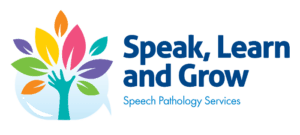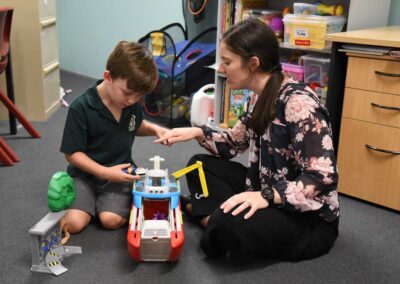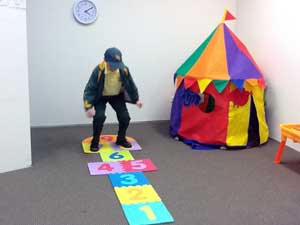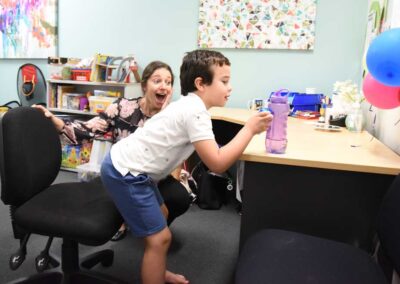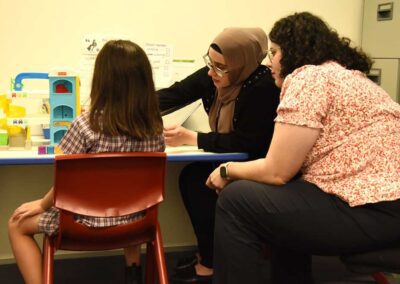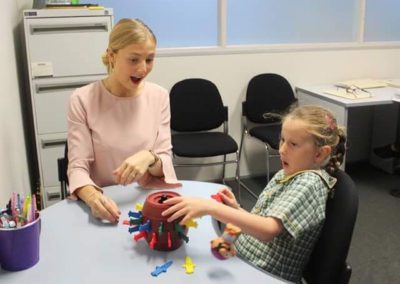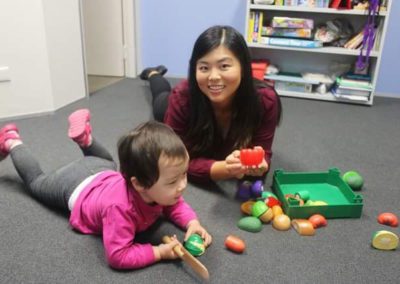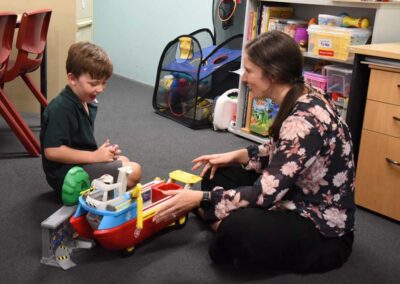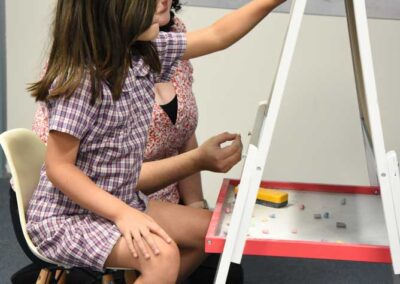Joint attention refers to the ability to share one’s attention with another person regarding a particular object, event, or topic. It involves coordinating attention between oneself, another person, and an object or activity of interest. Joint attention typically emerges during infancy and is an essential precursor to language development. It is divided into two main elements:
- Initiating Joint Attention: This occurs when an individual actively seeks to engage another person’s attention. For example, a child might point to a colourful toy to share their excitement with a caregiver.
- Responding to Joint Attention: This involves acknowledging and responding to someone else’s efforts to share attention. For instance, when a parent points to a bird in the sky, a child might follow the parent’s gaze and say, “bird.”
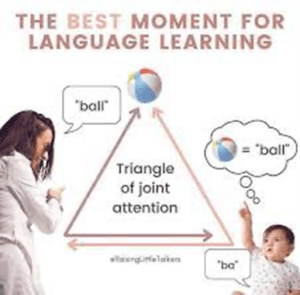
Joint attention is a critical precursor to language development and communication skills. It lays the foundation for meaningful interactions and serves as a building block for various aspects of speech and language development, including:
- Vocabulary Development: Joint attention experiences expose individuals to new words and concepts. By sharing attention with a caregiver or
therapist, individuals can learn the names of objects, actions, and emotions.
- Social Communication: Joint attention enhances social skills by encouraging turn-taking, reciprocity, and shared experiences. It helps individuals learn the rules of conversation, such as waiting for one’s turn to speak.
- Understanding Nonverbal Communication: Joint attention fosters the ability to interpret nonverbal cues, such as facial expressions, gestures, and body language. This skill is vital for understanding the emotions and intentions of others.
- Pragmatic Language Skills: Joint attention experiences provide opportunities to practice pragmatic language skills, including maintaining eye contact, using appropriate tone of voice, and taking conversational cues from others.
How do Speech Therapists Promote Joint Attention? Speech therapists play a crucial role in facilitating joint attention in their sessions. Here are some strategies they use:
- Visual Aids: Speech therapists often use visual aids, such as pictures, drawings, or videos, to capture the individual’s attention and promote shared focus.
- Play-Based Therapy: Play is a natural context for joint attention development. Therapists use toys and interactive games to engage their clients and encourage shared attention.
- Modelling: Therapists model appropriate joint attention behaviours, such as making eye contact, pointing to objects, or using gestures, to demonstrate how to share attention effectively. This helps clients learn through observation and imitation.
- Structured Routines: Establishing predictable routines within therapy sessions helps individuals anticipate and engage in joint attention activities more readily.
- Parent and Caregiver Involvement: Speech therapists often work closely with parents and caregivers to promote joint attention in everyday life. They provide guidance on incorporating joint attention strategies at home.
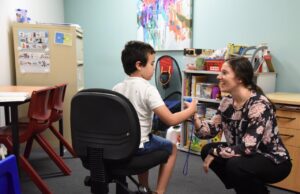
Joint attention is a foundational skill for effective communication and language development. Speech therapists play a vital role in fostering joint attention in individuals with communication disorders, helping them build the necessary skills to interact meaningfully with others and express themselves. By understanding the importance of joint attention and implementing strategies to promote it, speech therapy becomes a powerful tool for enhancing communication and empowering individuals to express themselves more effectively.
If you’d like to find out more about developing your child’s joint attention skills contact us at Speak Learn and Grow
